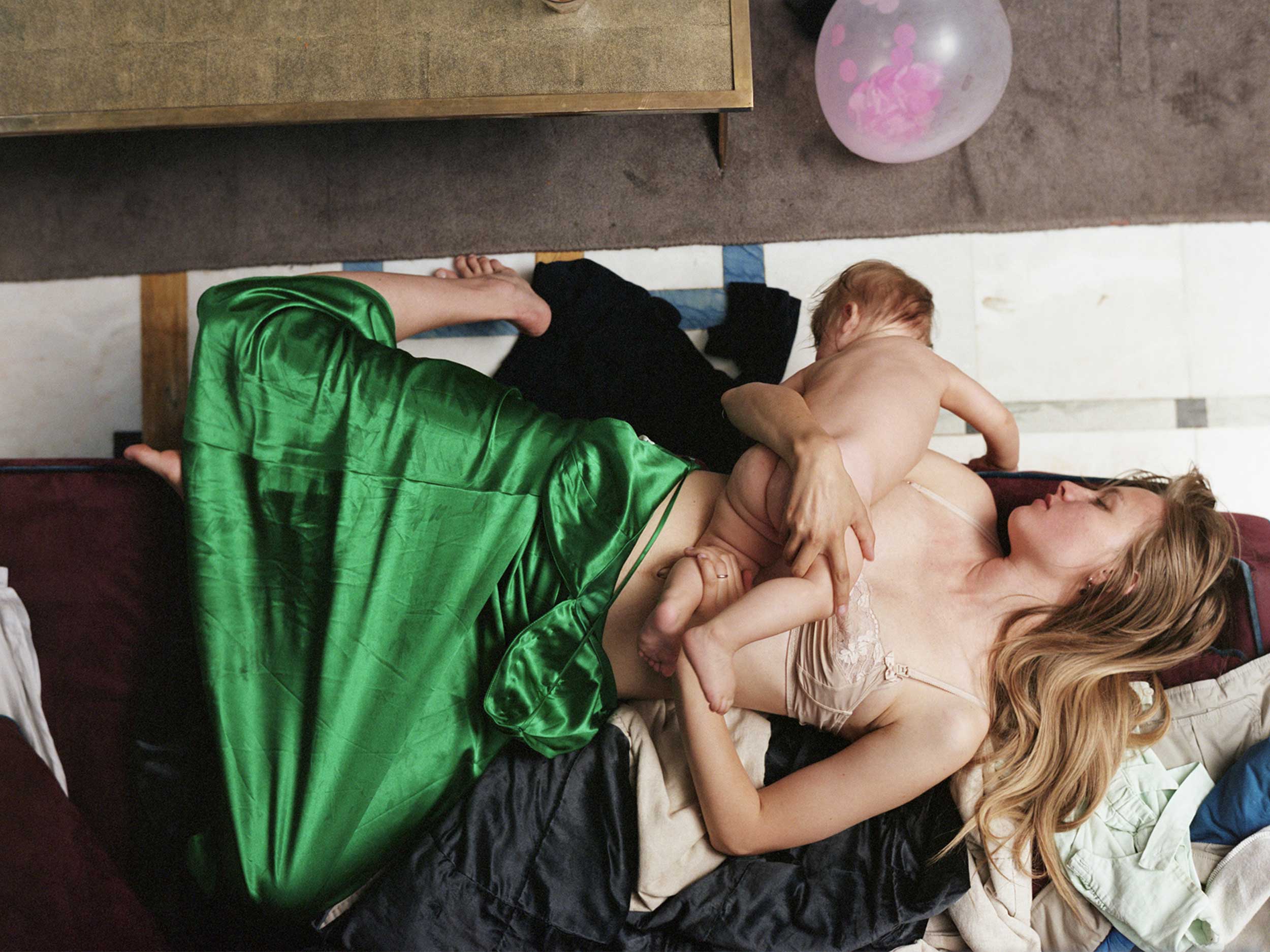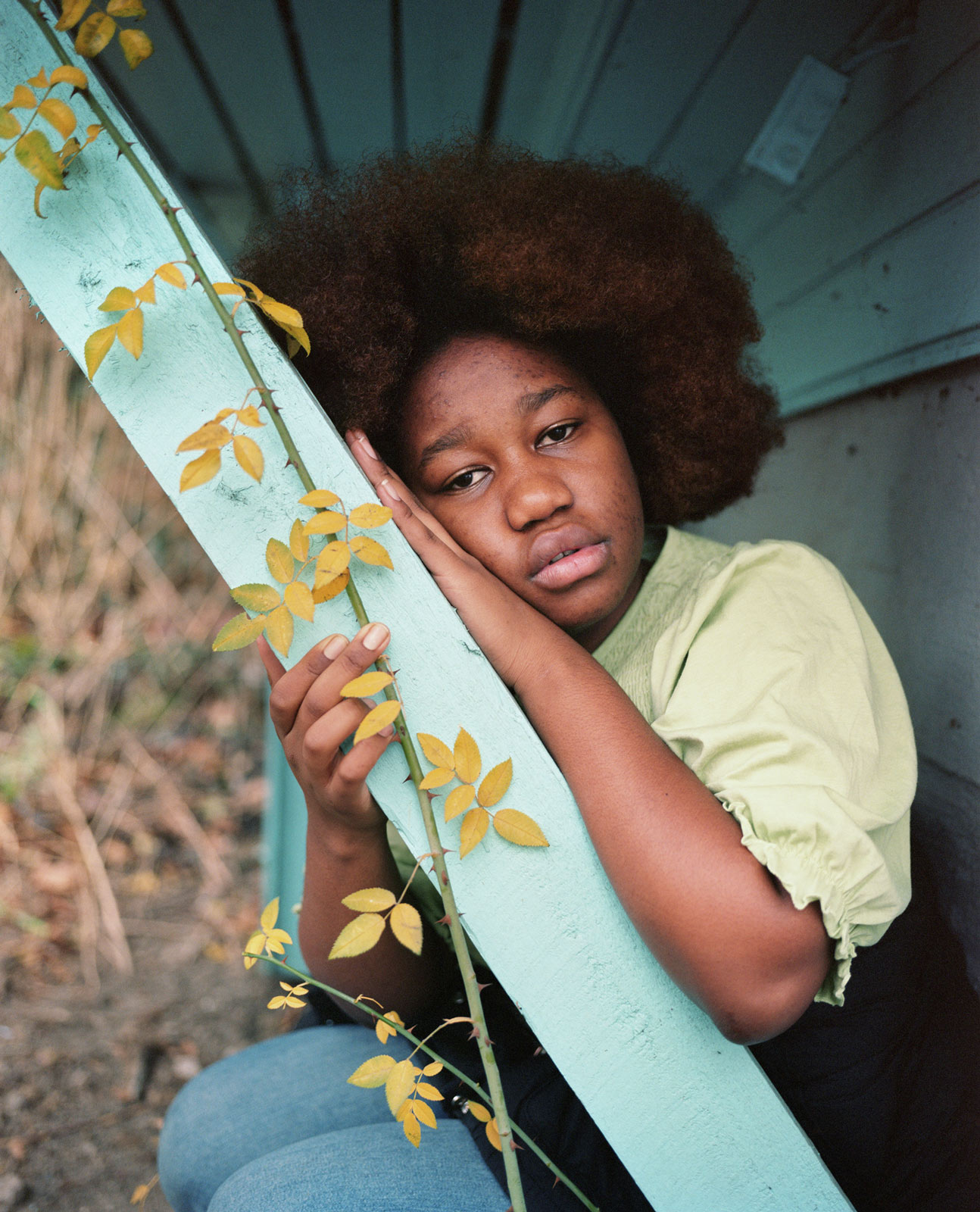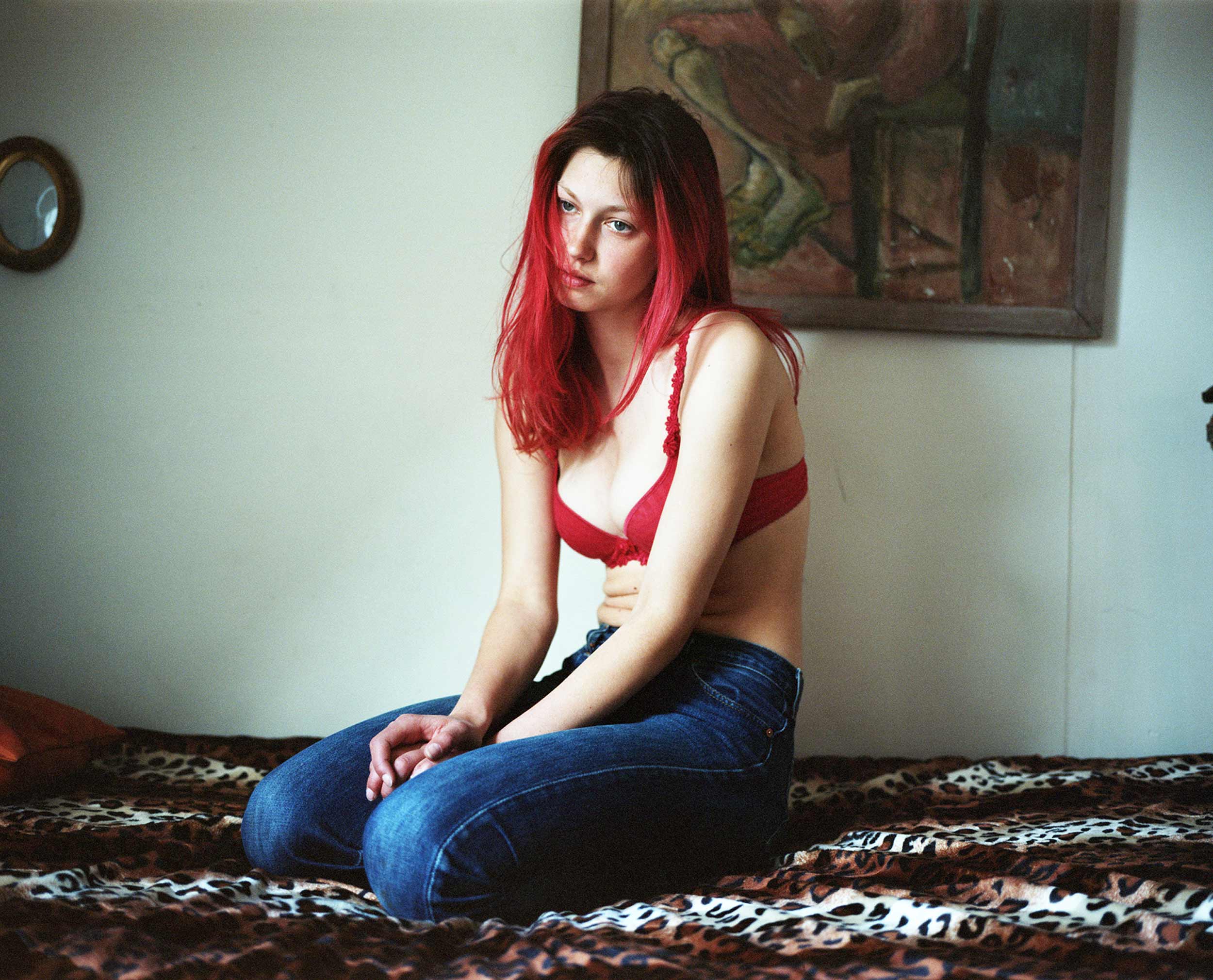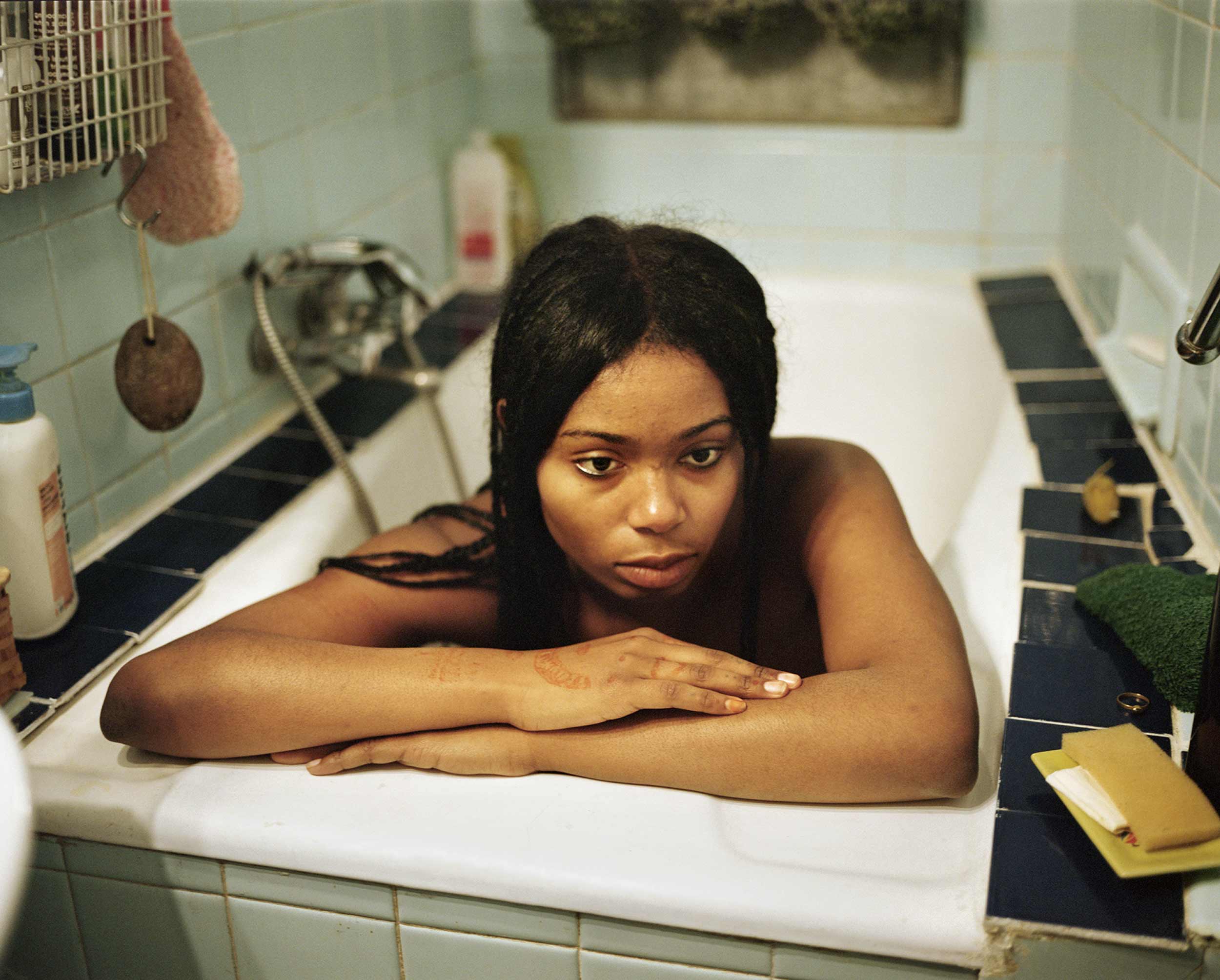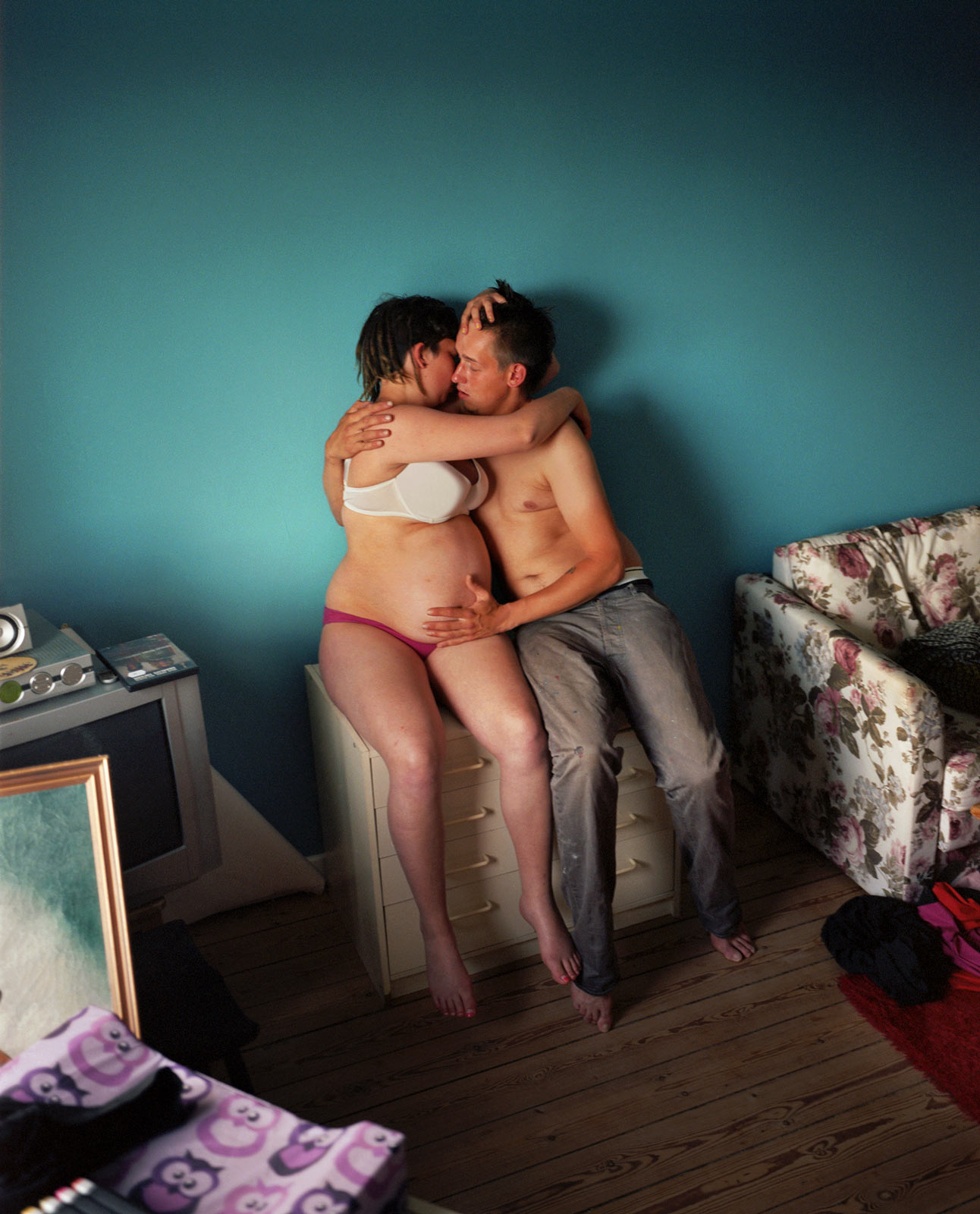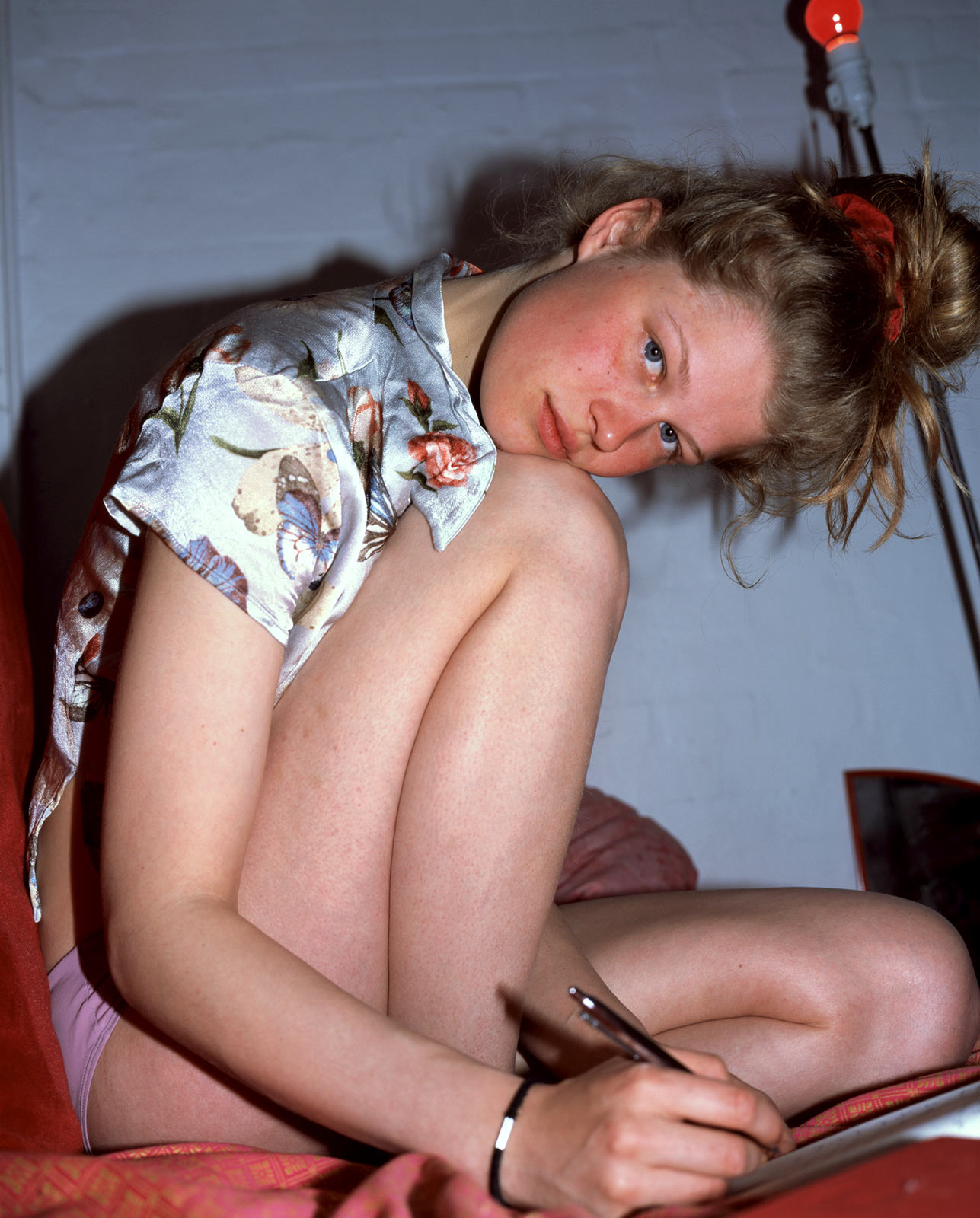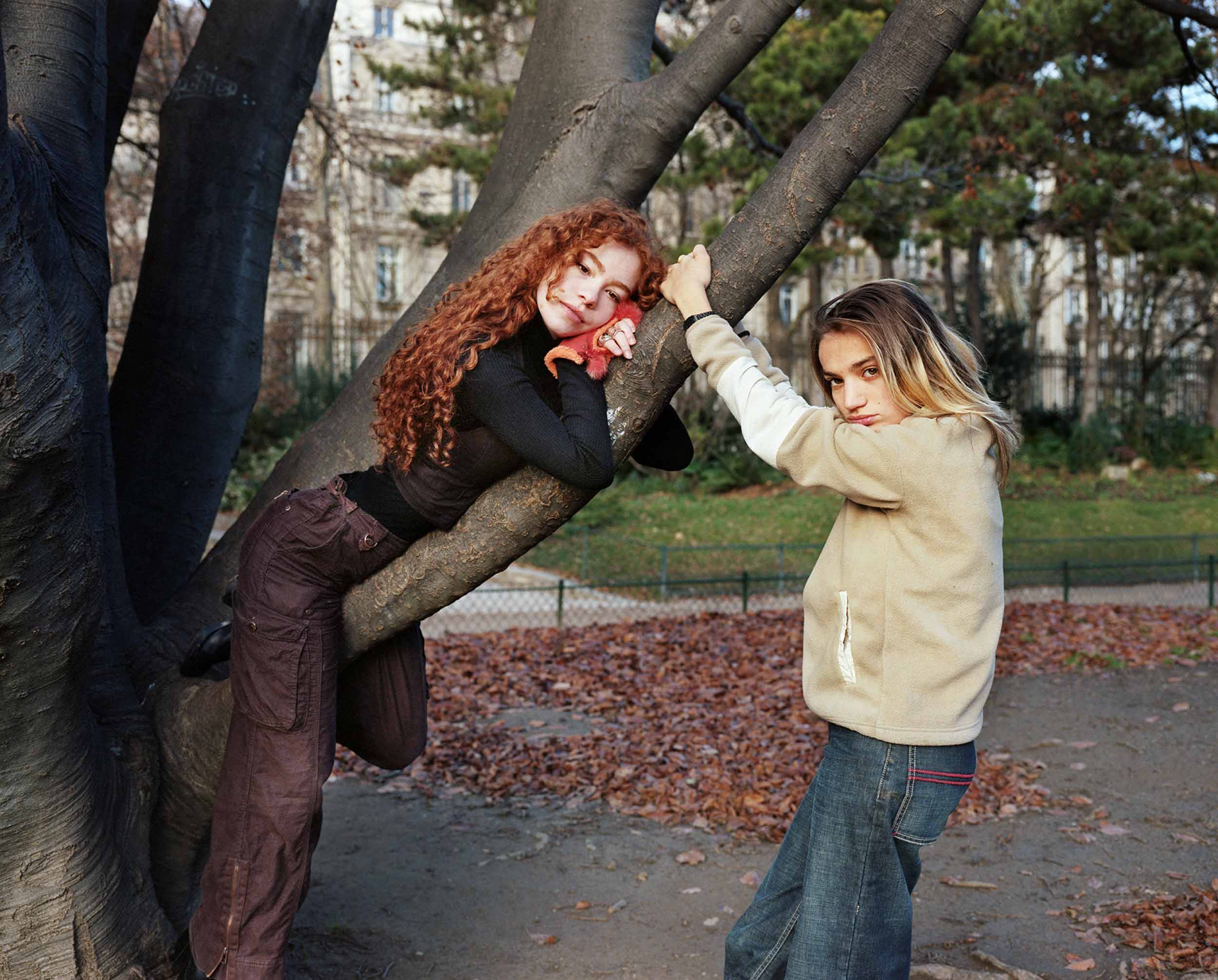The photographer joins Document to elaborate on the making of her book and the making of her mindset
Michella Bredahl’s subjects offer themselves to her lens; they gaze directly into it, or otherwise leave themselves exposed—laying down in unmade beds, stomachs bare, shoulders slouched. For her, an image is proof of love, of affection. “We think we are alone,” the Danish photographer muses, “but through art, we find out that we no longer are.”
This artistic philosophy is distilled in Love Me Again, the compilation of a decade’s worth of work that saw Bredahl find her photographic voice. Her tumultuous upbringing outside of Copenhagen painted femininity as wholly equal to vulnerability, a thinking underscored by a teen modeling career that shaped her own image in the eyes of much older men.
Eventually, in discovering more collaborative environments for art-making, and familiarizing herself with a lineage of portraitists who wore her same values (Diane Arbus, Nan Goldin, Lise Sarfati, to name a few), Bredahl found a new version of femininity that was multi-faceted. She twists the power dynamic she was subjected to in front of the lens, earning vulnerability from her subjects in providing them space for their voices—building intimacy rather than demanding it. In Bredahl’s eye, empowerment can be quiet; it can be tender and graceful and unvarnished.
Ahead of Love Me Again’s release via Loose Joints, Bredahl joins Document to elaborate on the making of her book and the making of her mindset.
Megan Hullander: Where did the title Love Me Again derive from?
Michella Bredahl: The title touches on the love I have for everyone in the book—and I hope it’s mutual. It refers to all the different ways we can be loved, and all the ways that love exists between us. I am someone who is always yearning for love. I can never get enough. I’m like a bucket with a hole in the bottom.
Making this book made me reflect on the traumas that love brings back. If you are someone who grew up with parental failure like me, love is complicated. I always gravitate to people with stories about love, and failure to understand and learn about it—but also because it becomes a mirror in which I feel less alone.
Megan: What was the context under which this book came together?
Michella: The pictures are taken over 10 years. I left home when I was 13 years old. I think photography has been a kind of survival for me—a way to hold onto a place in all of the chaos. It’s been a tool for me to understand and give order to the world around me, a way to give and receive love, to create a family and a community. I never thought these pictures [would be part of] a book when I took them. For me, photography is something that happens out of desire and love. It gives me a strong feeling of home, a place where I belong.
I took a break from photography for a time and went to study at a film school. My teacher there pointed out that I always had people lying down when I filmed them—it was a sign of trust, as if you were lying with someone you were close to, someone you loved. Then, I spent four years studying girls and women in their bedrooms.
“Photography has been a kind of survival for me—a way to hold onto a place in all of the chaos.”
Megan: What do you think draws you to the bedroom as a setting?
Michella: The bedroom is the most vulnerable room to me. When you are lying down, you are also most vulnerable. It is, in a way, a declaration of confidence from the person I photograph. I want to protect and perpetuate this vulnerability. I think I step into domestic places or environments, to come out of it again with empowerment.
I am drawn to domestic places because of my childhood. I lived with my mother in a small apartment in a vulnerable area in Denmark. We were teenagers with parents from all over the world. My neighbors were from Somalia. My best friend’s parents had fled from the old Yugoslavia. My other best friend’s mother was from Poland. In my primary school class, there were children with parents from Pakistan, Turkey, Africa, and Iraq. I would spend my days after school with my girlfriends at each other’s apartments, dressing up and putting makeup on each other. Our apartments were almost identical, but they were different worlds: different beds, sofas, and carpets, depending on our parents’ tastes and cultures. My mother loved everything with flowers, so we had flower paintings, flower rugs, and dried flowers everywhere. I relocate many of these spaces in my photography. When I was a little girl, those domestic places were unsafe. Now, through my photography, it has become safe to visit them again.
For me, photography is most interesting when it comes from within a life. This is where we can tell the strongest stories. That’s why I like to return to the same people and maintain intimacy with those I photograph. Again, I think it is the strength of personal work that you are not in a hurry, or dependent on having to make money from it. It comes from your heart, and that’s the only thing you need to listen to.
Megan: How does your experience in front of the camera inform your approach behind it?
Michella: I want the people that I am photographing to be excited to be in the photos, and to feel beautiful. I was discovered as a model when I was 14 years old. I was flown around the world. I was told I was lucky. Life has not always been easy—for a long time, it was really cruel—so I do feel lucky.
[But] in reality, I think that adults around me capitalized on my vulnerability. I often never saw pictures until they were in a magazine. I remember one shoot that particularly upset me was an underwear shoot that I didn’t want to do. My agent was pushing me into it. All day, I stood on a beach in my underwear, and felt so uncomfortable. I had no language to defend myself. The team complained about me afterward. Later, the picture appeared on the front page of a magazine without my approval. This was customary. I was mostly photographed by male photographers. I was often alone with them and I was very early sexualized. Back then, I liked it, because I felt seen and cared for when I did something good. But it was a short kind of love. A lot of people didn’t care about me.
“When I was a little girl, those domestic places were unsafe. Now, through my photography, it has become safe to visit them again.”
Then, I met a photographer who changed the course of my life. He introduced me to a book by Diane Arbus and later bought me an analog camera for my 19th birthday. He took the time to listen to me and became my friend, and helped me to become an artist. I want to give this care and love to those I photograph—inspire them to be themselves. We think we are alone, but through art, we find out that we no longer are.
Megan: How has taking photos altered or built upon your understanding of what femininity means?
Michella: It is difficult to put precise words to it. I never felt that it was something I’ve been chasing with my camera. It is something that has become more clear by looking [back] at all my photography this year.
I think femininity is an energy that everyone can carry. I have photographed men over the years, but rarely has it been a relaxing experience for me. I am always on guard. The men I have included in my photography are those who I trust, and they are likely to be more feminine than masculine. I think that if you have a few unpleasant experiences with masculinity, you never forget it. It grows into your nervous system. I grew up in a very misogynistic environment and have seen [feminine] energy exploited and abused since a very young age. I think, without knowing it, I have used the camera to create a shelter for feminine energy.
I remember my first photography project was when I took a darkroom course on Devonshire Street in Sydney. I was standing outside of a club smoking a cigarette with one of my best friends, Michael. Suddenly, this man came by and punched Michael in the face. I remember that Michael wanted to defend himself, but gave up because the man was much bigger, so he turned around and we ran away. I felt so sad for my friend, and I felt so powerless—that I had failed him. A few weeks later, my friend Hayden was assaulted and seriously beaten to the head, because he was gay. He was hospitalized. In honor of him, I decided to photograph all my queer friends in their bedrooms. Michael was one of them. It’s one of my favorite photographs I have ever taken. I remember feeling that Michael came to life there in front of the camera—he could be himself without feeling that he was in danger.
“I think, without knowing it, I have used the camera to create a shelter for feminine energy.”
Megan: In what ways do your images of others act as self-portraits?
Michella: I think that most art is a form of self-portraiture. My photos of reclining women, who are exposed, looking at the camera, resonate the strongest with me. I think it’s me as a young girl, looking at all the adults around me and asking them to take good care of me. Photography in itself is a kind of catharsis. Maybe you have to get out there, so what is inside resonates with what is outside of you. To escape the bed you were born in. Otherwise, you may always feel disconnected. Photography is a way to feel connection.
I create images with the people I photograph. It’s fun. Sometimes we cry. We share stories and memories. I feel fulfilled after a shoot. I love to photograph my friends, especially in their spaces. I also love to photograph strangers. Often strangers become my friends. Some of my friends I have photographed for many years. Now some of them have babies, and I photograph them with their babies. We talk about what kind of parents we want to be. We discuss how to take the pictures, and where. What clothes to wear. It’s always been like that.
Before, they would take care of me. I would sleep on their couches after a shoot. Now, I have more money. I can take a taxi home. It’s been a journey together. My friends in the book are a part of the process. I don’t think it’s a portrait of me or just of them; it’s something we create together out of our souls meeting between the camera.
Megan: How do you find your voice in an image, and balance it with those of your subjects?
Michella: I am not trying to balance my voice; it’s just there. It’s always been there. It’s like if someone stands at the same corner for 10 years, you start to notice them. There is an essence. There is a voice there. It’s the same with photography. If you keep looking at the same thing with your camera, being obsessive, you notice details and patterns, you create a language. When I started photographing, I had a voice, but I didn’t have a visual language. People now recognize my pictures as an extension of me.
This book has helped me to not judge others and to be humble towards everyone. No matter how much you think you know someone, you can never truly know what they are going through, the extent of pain they are carrying on their shoulders. I think we should all be better at telling others we are proud of them and taking care of each other. Try to meet the world with as much love as possible.
Love Me Again by Michella Bredahl is published by Loose Joints.


